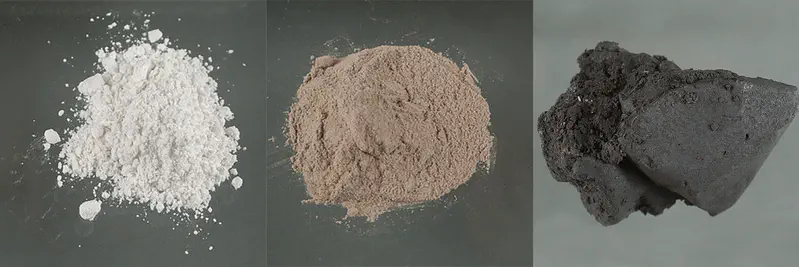DRUGS: WHAT YOU
NEED TO KNOW Booklet

Signs and Symptoms of Heroin Use

Courtesy of DEA.gov
What does it look like when a person uses heroin? Heroin is a powerful narcotic and causes sleepiness and relaxation.1 A person who has used heroin will be drowsy. Their arms and legs will feel heavy. They may nod off unpredictably. At high doses breathing may stop and death can occur.
If the dose is large enough, breathing may cease immediately, which is what occurs during an overdose.
Additional short-term effects: 2
- Flushing
- Itching
- A rush of euphoria
- Nausea
- Vomiting
- Confusion
- Slurred speech
- Dry mouth
- Pinpoint pupils
- Lack of appetite
- Constipation
- Detachment from or avoidance of responsibilities3
If a person has been using heroin for a long time, they may not experience all of these symptoms. Many people struggle with a lifestyle of addiction, losing stable employment and housing. They may piece together the money each day to get just enough heroin to keep themselves from going into withdrawal. At this dosage, they feel no rush or euphoria. They simply avoid the sickness of withdrawal.
Heroin users may also mix their heroin with a stimulant such as cocaine or methamphetamine and avoid the drowsiness and sluggishness. This drastically increases the risk of serious consequences or death and can make it hard to detect someone who is using heroin.
Long-term Effects
Long-term, the use of heroin can cause serious and even deadly health problems.1
- Endocarditis, a deadly infection of the lining of the heart which can occur when bacteria, fungi or other germs are introduced into the bloodstream during injection drug use
- Hepatitis C or HIV resulting from sharing needles
- Pneumonia
- Tuberculosis
- Scarred and collapsed veins from injections
- And, of course, addiction and overdose
Withdrawal
The withdrawal from heroin is dreaded by a person who is addicted.4 Once they have experienced this sickness, they will go to great lengths to avoid these symptoms.
- Severe cravings
- Restlessness
- Insomnia
- Vomiting
- Stomach and muscle cramps
- Anxiety
- Runny nose
- Irritability
- Depression
- Diarrhoea
- Panic3
- High blood pressure
The dry statement of these symptoms belies the intensity of sickness a person in withdrawal feels. An addicted person in full-blown withdrawal feels sicker than he has ever felt in his life. He may wish he could die just to end the pain.
While heroin withdrawal itself is not generally fatal, it is possible to suffer complications like dehydration, fever or other conditions that end his life. Withdrawal is vastly safer when a person is properly supported throughout the process.
Heroin in Europe

An arial view of an Afghan village.
In years past, most of Europe’s heroin was sourced from Southeast Asia. At this time, Europe’s main supply of heroin comes from Afghanistan and Pakistan. In fact, four-fifths of the world’s heroin comes from Afghanistan.5
The drugs mostly come through the Caucasus region and north into Europe.6 From port cities in Georgia, the drug makes its way to the Netherlands and other countries in Western and Central Europe.6 Or it may leave Armenia by air, destined for Denmark.6 Another route of trafficking is by way of the Suez Canal.5
Citing 2017 figures for both production and seizures, the European Monitoring Center for Drugs and Drug Addiction (EMCDDA) states that an increased quantity of heroin is flooding into the region. Between 2016 and 2017, the quantity seized jumped from ten tons to more than twenty.
Heroin processing operations in the EU are a new trend in the manufacture of heroin.5 This may be due to the greater availability of precursor chemicals used in processing in Europe than Southwest Asia.
Use of Heroin and Other Opioids
Included in the class of opioids along with heroin are opium and a long list of prescription drugs, including morphine, oxycodone, hydrocodone, fentanyl, meperidine (also known as pethidine), and others. It’s estimated that 1.3 million Europeans are high-risk opioid users.7 That means they are using the drug often enough and heavily enough to be addicted. This number equals 0.4% of the population—sixty-five per cent of people who use heroin use it daily.
However, if you include all the people who have used the drug in the past year, the number rockets up astronomically. Including all EU countries, the number is 34.3 million of those aged 15 to 34.5
This class of drug is responsible for the vast majority of drug overdose deaths. According to EMCDDA, 82% of deaths involve opioids. And one-third of all requests for drug addiction treatment relate to opioid addiction.
Trends in Treatment
Over the past decade, there has been a dramatic drop in the number of people entering rehab programs.7 In 2006, more than 50,000 individuals entered drug treatment programs for the first time, mostly from Italy, Spain and the UK. By 2018, this number had dropped to less than 20,000.
Those who had previously gone through treatment and entered a treatment facility again numbered 86,400. These numbers could indicate that there are not nearly as many people starting to use heroin as previously. But they also mean that those who have already been treated are not recovering from their addictions, so they are back for more help. It’s also possible that the users shifted to other classes of drugs.
Snapshots
Here are some snapshots of the situation in different countries:
- Belgium: Of those seeking rehab, heroin sends about 19% of them, about half the number sent by cannabis.8 There are more than 16,000 people receiving OST (opioid substitution therapy, such as methadone).
- Finland: In Finland, more than half the people going to treatment cite opioids as their primary drug problem.9 Amphetamines are in second place at 19%, followed by cannabis. There are about 14,000 high-risk opioid users and more than 3,000 receiving OST.
- Germany: The primary drug sending people to rehab is cannabis, with heroin in second place at 30% of treatment admissions.10 Approximately 105,000 Germans are estimated to be high-risk opioid users.
- Italy: Heroin is by far the top drug sending people to rehab.11 There are close to a quarter-million high-risk opioid users, and nearly 70,000 receive OST.
- Portugal: Heroin is the top drug sending people to rehab (39%), followed by cannabis (37%).12 While there are more than 33,000 high-risk opioid users, there are only about 30 overdose deaths each year.
Sources:
-
Drugscience.org.uk, “Heroin—Diacetylmorphone (Heroin)” Drug Science Article ↩︎ ↩︎
-
National Institute on Drug Abuse (2021), “Heroin Research Report—What are the immediate (short-term) effects of heroin use?” NIH/NIDA Research Report ↩︎
-
United Nations Office on Drugs and Crime, “Smack/Brown/H/Horse/Junk/Harry/White lady”. UNODC Article ↩︎ ↩︎
-
United Nations Office on Drugs and Crime and the European Union (2017), “Some Types of Drugs Used in Nigeria” UNODC Publication (PDF) ↩︎
-
European Monitoring Centre for Drugs and Drug Addiction and EUROPOL (2019); “EU Drug Markets Report 2019”. EMCDDA & EUROPOL Report (PDF) ↩︎ ↩︎ ↩︎ ↩︎
-
United Nations Office on Drugs and Crime; “The Afghan Opiate Trade Project (AOTP)”. The AOTP Project ↩︎ ↩︎ ↩︎
-
European Monitoring Centre for Drugs and Drug Addiction (2020), “European Drug Report KEY ISSUES” EMCDDA Report ↩︎ ↩︎
-
European Monitoring Centre for Drugs and Drug Addition (2019), “Belgium, Country Drug Report 2019” EMCDDA Report ↩︎
-
European Monitoring Centre for Drugs and Drug Addition (2019), “Finland, Country Drug Report 2019” EMCDDA Report ↩︎
-
European Monitoring Centre for Drugs and Drug Addition (2019), “Germany, Country Drug Report 2019” EMCDDA Report ↩︎
-
European Monitoring Centre for Drugs and Drug Addition (2019), “Italy, Country Drug Report 2019” EMCDDA Report ↩︎
-
European Monitoring Centre for Drugs and Drug Addition (2019), “Portugal, Country Drug Report 2019” EMCDDA Report ↩︎

 ®
®
